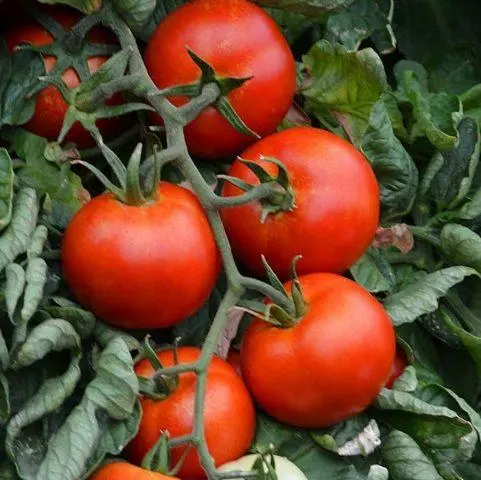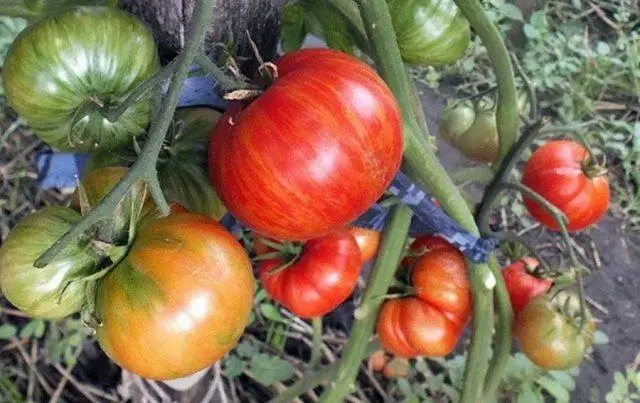Contents
Mosaic on tomatoes is difficult to treat. However, some methods can minimize the damage from the disease for plantings.
Causes
Tomato mosaic is a viral disease that is most often provoked by the causative agent Tobacco mosaic tobamovirus. The disease is resistant to external influences, it harms vegetables both in open ground and in greenhouse conditions.
Most often, a mosaic on tomatoes appears for the following reasons:
- the presence of infection on seeds or in the soil;
- the use of dirty garden tools when caring for tomato bushes;
- the entry of the virus into the tissues through damage to the leaves and roots;
- the presence of infected plant residues in the beds.
The pathogen can first get on the gardener’s clothes and shoes, and then move on to tomato bushes. The virus is spread by some insects – thrips, cicadas and aphids.
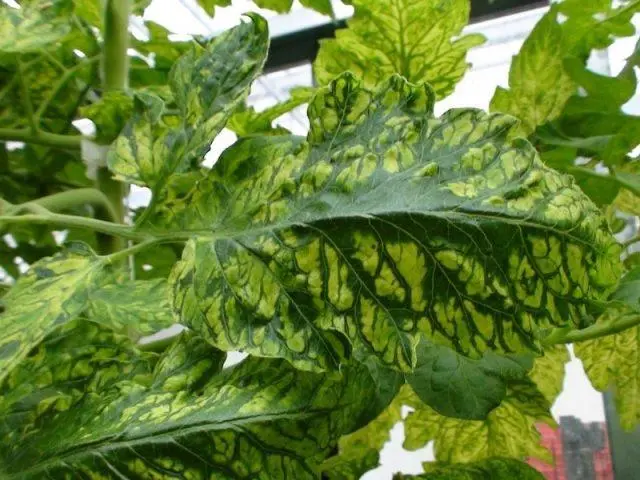
Tobacco mosaic affects not only tomatoes, but also peppers, eggplants, potatoes and other crops
Symptoms of infection
Mosaic spotting of tomatoes is manifested by characteristic features. Suspect the disease allow the following symptoms:
- wilting of leaves and loss of elasticity in the plates;
- color change – green bushes become light green, bright yellow or light straw;
- folding – with tobacco mosaic, tomato leaves grow unevenly, the symptom is especially pronounced in the upper part of the bushes;
- deformation – the plates are greatly reduced in size and narrowed, sometimes they acquire a filamentous shape.
With the development of the disease at the fruiting stage, gray-green areas appear on the tops of the tomatoes. Subsequently, the tissues die off, the tomatoes are covered with a brown thin mesh.
Varieties
Photos of tomato virus mosaic and treatment show that the disease is represented by two main varieties. Among themselves, the types of the disease differ in external manifestations and the degree of danger.
Pepino mosaic virus on tomatoes
Pepino mosaic is considered the most dangerous. It quickly affects tomato bushes, leads to leaf discoloration and chlorosis. The tops of the shoots become thinner and become nettle-shaped. On the plates, not only mosaic clarified areas, but also bubble swellings can appear.
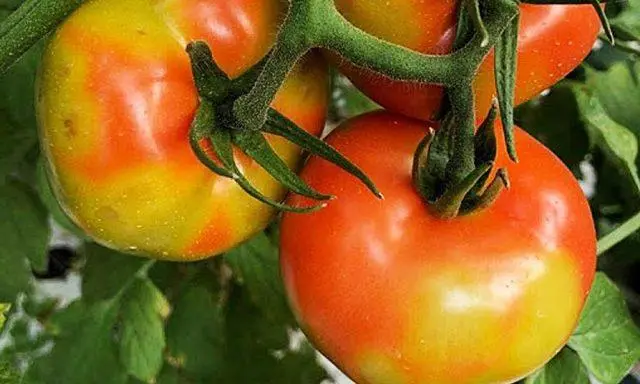
Pepino mosaic especially often damages fruits, changes their color and impairs taste.
Tobacco mosaic virus in tomatoes
Tobacco mosaic is a very common disease worldwide. It appears as yellow and light spots on the leaves, causes a curvature of the aerial parts of tomato bushes. If left untreated, it leads to tissue necrosis. The fruits of a tomato affected by a viral disease decrease in size, deform and darken.

Tobacco mosaic makes tomatoes more vulnerable to other infections
What is dangerous mosaic disease of tomatoes
Spotted mosaic on tomatoes causes severe damage to plantings. In the absence of treatment:
- the tops of tomato bushes become thinner and begin to curl;
- leaves become yellow-green or fade strongly;
- spots and necrotic areas appear on stems and petioles;
- the fruits become smaller, ripen unevenly and crumble ahead of time;
- on tomatoes growing closer to the base of the stem, yellow and brown spots form;
- tomatoes darken from the inside, a kind of brown mesh appears in the pulp.
The viral tobacco mosaic spreads very quickly through plantings and spreads from diseased bushes to healthy ones. Productivity drops sharply, even fruits that are still usable lose their presentation.
How to deal with mosaic on tomatoes
Photos of mosaics on tomatoes and treatment demonstrate that both folk methods and chemical agents are used to combat the disease. It should be noted that they show the greatest effectiveness in the early stages of the development of the disease.
Chemicals
If the spots on the leaves of a tomato are very noticeable, like a mosaic, the affected plants must, first of all, be completely removed from the garden. The remaining bushes are treated with chemicals to protect them from the development of the disease.
Fufanon Nova
The drug Fufanon, which is based on the active ingredient malathion, belongs to the category of insecticides. Designed primarily to combat tobacco mosaic distributors – aphids, whiteflies, thrips, weevils and other insects.
For the treatment of tomatoes, it is necessary to dilute about 5 ml of a concentrated preparation in 5 liters of water. The resulting product is poured into a spray bottle and used to spray plantings on the leaves. At 10 m2 the garden should take about 2 liters of the drug.
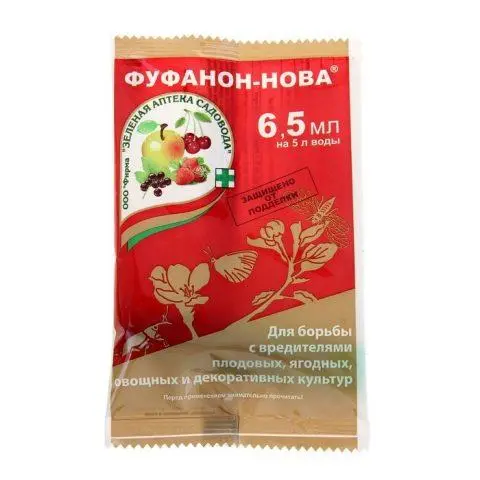
Fufanon Nova protects tomatoes from pests and tobacco mosaic for 2-4 weeks
Carbophos
Another chemical agent based on malathion is designed to combat parasites, bacteria and pathogens of viruses. Quickly decomposes in the soil, does not harm beneficial microflora.
For the treatment of tomatoes affected by tobacco mosaic, it is necessary to dilute 75 g of the substance in a small amount of water. The liquid is brought to a homogeneous state, and then topped up to the volume of a full bucket. The resulting preparation is used for spraying the stems and leaves of tomatoes in cloudy but dry weather.
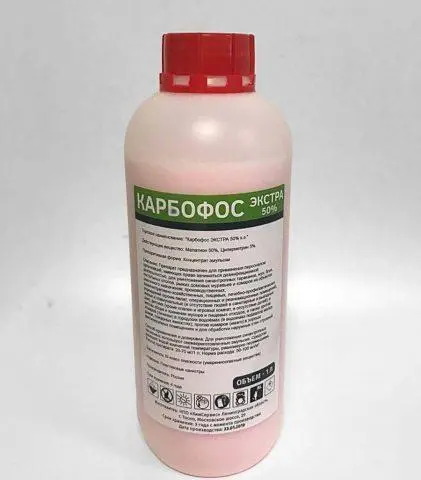
The protective effect of Karbofos lasts about ten days, so it is recommended to repeat the treatment with tobacco mosaic 2-3 times
Biopreparations
Biological preparations have a good effect in the early stages of the development of tobacco mosaic. They are safer for vegetables than chemicals, and do not harm ripening fruits. It is allowed to use formulations even shortly before harvest.
Novosil
An immunostimulating agent increases the endurance of tomatoes and strengthens their root system. Tomato bushes with regular treatments are less likely to suffer from fungi. The drug is also able to fight the tobacco mosaic virus in the early stages.
For spraying, Novosil is used in this way – about 3 drops of the product are diluted in 15 liters of water. A homogeneous composition is carried out processing the culture on the leaves. Spraying is desirable to perform three times per season with small intervals – during the flowering period, and then during the formation of fruits.
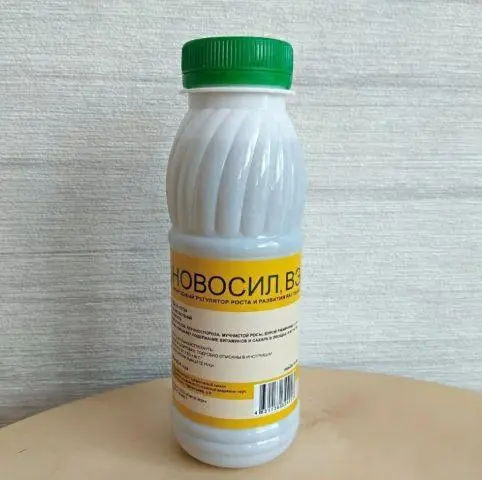
It is necessary to spray tomatoes with Novosil in calm, dry weather.
Immunocytophyte
The composition of the biostimulating drug includes urea and arachidonic acid. The tool protects tomatoes from infection with tobacco mosaic, prevents the development of fungi and accelerates the growth of bushes.
To spray tomatoes, dilute one Immunocytophyte tablet in a glass of water, stir and add up to 2 liters. The solution is used for processing on leaves in warm and cloudy weather. It is also useful to soak tomato seeds in the preparation before planting. In this case, a concentrated agent is used – the tablet is diluted in 15 ml of water and about 5 g of culture grains are immersed in the resulting liquid.
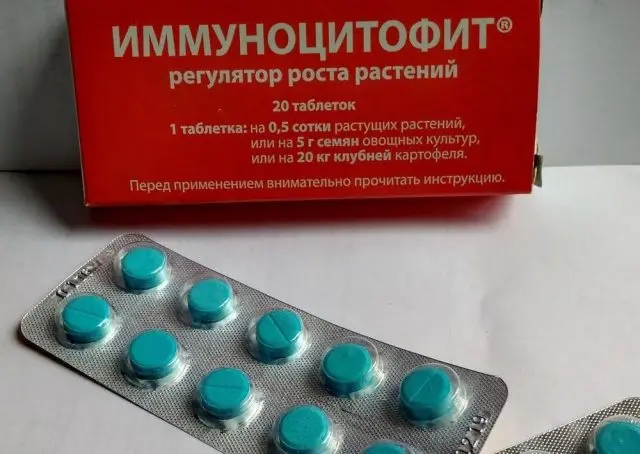
Immunocytophyte for tomatoes is used three times per season – at the seedling stage, during the flowering period and when fruits are set.
Folk remedies for mosaic tomatoes
It is possible to treat tobacco mosaic of tomatoes in the initial stages with folk remedies. It should be borne in mind that their efficiency is average. If the symptoms of a viral disease are pronounced, home remedies may not work.
Boric acid
A cheap product protects tomatoes well from viruses and fungi, and also serves as a useful top dressing. For spraying bushes, dilute 1 ml of the drug in 1 liter of water and mix well.
The solution is used to treat plants in the evening or morning. Spraying is repeated twice a week until the condition of the plantings improves.
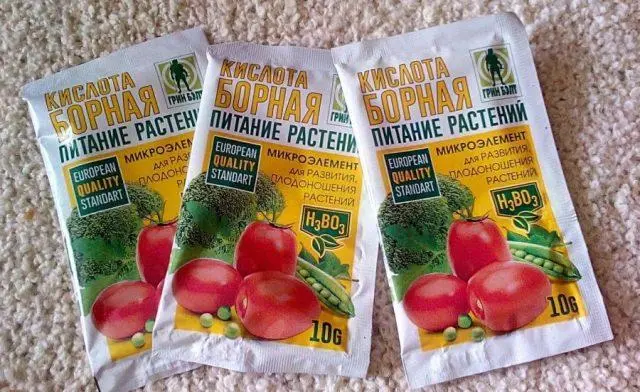
Boric acid improves the metabolic processes of tomatoes, and also protects the bushes from pests – in particular, from aphids and ants.
Iodine solution
A solution prepared on the basis of milk and iodine has good antiviral properties. A home remedy makes up for the deficiency of iron and potassium necessary for the development of the culture, accelerates the growth of shoots and increases the resistance of bushes to diseases.
To prepare a therapeutic and prophylactic drug, mix 1 liter of milk in a bucket of water, and then add ten drops of iodine tincture. A homogeneous agent is used to irrigate the bushes at the first symptoms of a tobacco mosaic, and then spraying is repeated after a week.
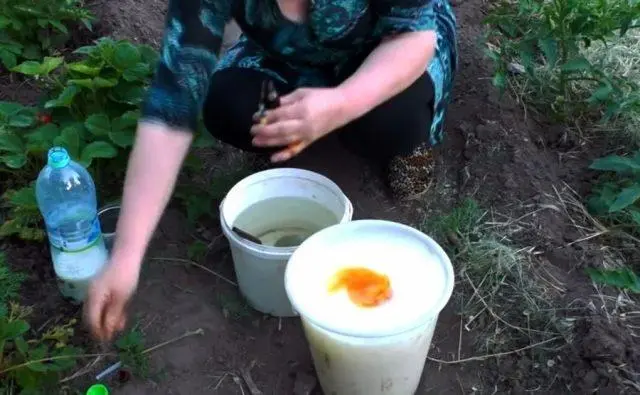
To prepare a milk-iodine solution, you need to use natural milk with a low fat content.
How to deal with mosaic on tomatoes in a greenhouse
White mosaic on the leaves of tomatoes appears both on bushes in the open field and in greenhouses. Treatment is generally carried out in the same ways. Heavily affected plants in the greenhouse are removed from the beds, and the remaining bushes are sprayed with folk remedies or chemicals.
A feature of the treatment of tomatoes in a greenhouse with a tobacco mosaic is that it is also necessary to process the walls of the structure. They can retain viral particles, which subsequently lead to a relapse of the disease. Also, during the treatment process, it is recommended to shed the soil with the selected preparation in order to reliably eliminate the causative agent of the disease in the soil.
How to deal with mosaic on tomato seedlings
Tobacco mosaic can appear on tomatoes at the very first stages of development – this happens if the planting material is already infected with the virus. With the formation of white and yellow spots on the leaves of seedlings, it is necessary to urgently destroy all affected seedlings. The virus very quickly infects seedlings located close to each other.
The processing of tomatoes from the mosaic at the seedling stage is carried out with the same preparations that are used to treat adult plants. But the dosage is reduced to a minimum. In addition to chemicals and biological agents, solutions of potassium permanganate, hydrogen peroxide or chlorhexidine are also allowed.
To reduce the risk of tobacco mosaic development, it is recommended to treat tomato seeds before planting. Grains are briefly placed in a solution of Fitosporin or potassium permanganate to disinfect and increase immunity.
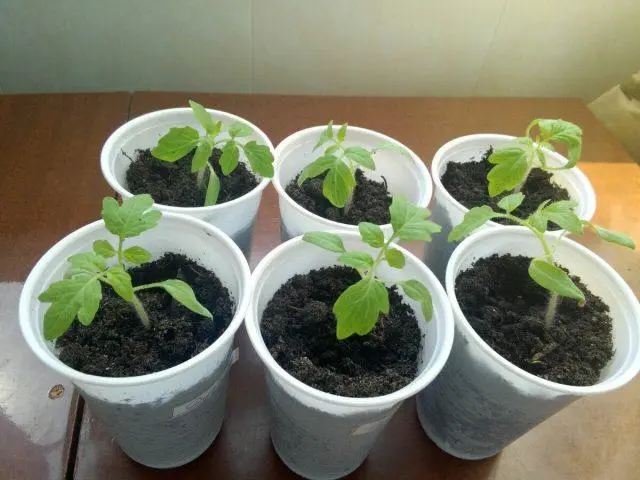
To prevent tobacco mosaic, tomato seeds should not be sown in a common box, but immediately in separate cups
Preventive measures
Because tobacco mosaic is difficult to treat, the focus should be on prevention. In particular, it is recommended:
- use tomato seeds from trusted suppliers for sowing;
- do not neglect pre-planting treatment;
- observe crop rotation when growing tomatoes;
- disinfect garden tools after each use;
- regularly weed beds with tomatoes from weeds;
- prevent the spread of pests on the site;
- pay attention to regular feeding.
When growing tomatoes in a greenhouse, it is necessary to annually replace the top layer of soil with a thickness of about 15 cm. After harvesting, the walls of the greenhouse are disinfected every autumn from fungi, viruses and microorganisms.
disease resistant tomatoes
Some varieties of tomatoes show good resistance to viral diseases. From tobacco mosaic rarely suffer:
- Ural. A large-fruited variety brings tomatoes up to 200-350 g by weight of a flat-rounded shape. The tomato has a good taste and is often grown for sale.

Hybrid tomato Ural gives up to 9 kg of yield per 1 m2
- Charisma. The variety is intended for cultivation in greenhouse conditions, it has good resistance to fungi and viruses. Bears fruit 115 days after germination, shows good keeping quality.

Charisma tomatoes reach 150 g by weight
- Firebird. A popular hybrid matures in 100 days, develops in a greenhouse and in open ground. Gives large red-orange tomatoes up to 150 g each, has a high immunity to viruses and cold resistance.

Tomato Firebird allows you to collect up to 13,5 kg of fruits from 1 m2 of plantings
Varieties with high immunity are less likely to suffer from tobacco mosaic than others, but they are not completely protected from the virus. When growing tomatoes, in any case, it is necessary to observe agricultural technology and ensure the prevention of the disease.
Conclusion
Mosaic on tomatoes reduces the yield of vegetable crops and can lead to the gradual death of the bushes. There are many ways to fight the virus, but the main focus should be on prevention.












